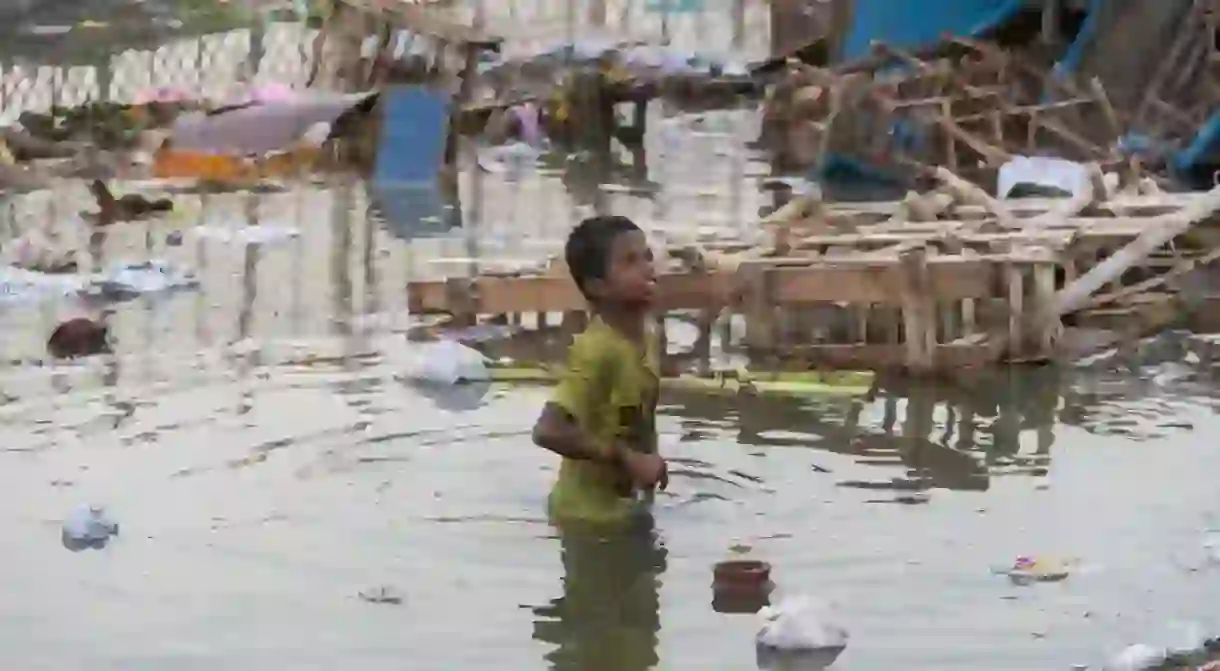World Environment Day 2018: India's Pollution Crisis Explained

In a tumultuous global situation where an ever-increasing number of people are facing serious threats from pollution and climate change, it’s more important than ever to take notice of World Environment Day. As the spotlight turns firmly on India, which plays host to this year’s event, it’s just as crucial to understand the challenges faced by the world’s second-most populous country and its fastest-growing major economy.
With this year’s theme being ‘Beat Plastic Pollution’, there’s much for India to take heart in. The country has one of the lowest plastic consumption rates in the world (11 kilos or 24 pounds per person each year, compared to a mammoth 109 kilos or 240 pounds in the US) and a fairly high recycling rate fuelled by a thriving informal plastic recycling sector. However, not everything’s rosy when it comes to the South Asian country’s relationship with the environment, especially in its major cities. According to WHO’s Global Ambient Air Quality Database, a staggering 14 out of the top 20 most polluted cities in the world are in India, with the country’s capital city, Delhi, a poster child for air-quality crisis the world over.


Delhi’s pollution paradox
Unlike some of its global counterparts, Delhi’s worsening pollution crisis isn’t entirely of its own making. The city’s Air Quality Index (AQI) – with a threatening average concentration of fine particulate matter at 143 μg/m3 – has been shattering global records for years now. However, a major source of this pollution is the practice of seasonal crop burning in the rural parts of neighbouring states Haryana and Uttar Pradesh, a problem that is very difficult to regulate.

Although the Delhi government has taken several measures to combat pollution and the city’s smog problem over the years, the Odd-Even Policy measure is the one that’s often talked about, more for its novelty than anything else. This vehicle rationing system was in operation intermittently from January 2016 until November 2017. According to the rule, private vehicles with odd and even number plates were allowed to take to the road only on alternate days. While this policy did not achieve the intended results, the government has continued to work actively with the private sector to combat the traffic problem. This includes the construction of the Delhi Peripheral Expressway to divert traffic out of the city, and even a radical blanket ban on the sale of firecrackers during Diwali, the Indian festival of lights.
Unfortunately, the crisis isn’t confined to land, either. The rivers around the region, particularly the Yamuna and Ganges, are highly polluted. Despite extremely expensive and successive efforts by the government to clean these rivers, the continued dumping of waste has posed a severe ecological threat.

Mumbai – waste generation and mangrove reduction
India’s financial capital, Mumbai, isn’t faring much better than Delhi. According to one recent app-based study, breathing Mumbai’s air could be as harmful as smoking four cigarettes a day. However, the city’s problems go beyond air pollution and include threatening levels of waste generation and a striking reduction in its famed mangroves and green cover – a bulwark against the city’s pollution woes.


In just the past two years, the Deonar Garbage Dumping Ground in Mumbai has reported multiple incidents of fire due to increased dumping, with each fire releasing toxic fumes into the air. The city’s mangroves are also facing serious threats from the increased dumping of plastic and construction debris, despite the state achieving the highest increase in mangrove cover this year.

Pollution in major cities and India’s growing urban threat
Indian cities have grown at a staggering pace in recent years and have been responsible for India becoming one of the world’s fastest-growing economies. Leading the pack in terms of pollution are cities such as Varanasi and Bengaluru, both of which face severe problems relating to water pollution and contamination. The polluted banks of the Ganges in Varanasi have attracted much attention, and Bengaluru’s highly polluted ‘burning lake’ in Bellandur has put the city’s problems in the global spotlight.


How is India fighting its pollution crisis?
India has continuously stepped up efforts to tackle these environmental problems head-on using long- and short-term measures. These include subsidies for machines used to clear agricultural residue instead of burning them, and an ambitious project for cleaning the Ganges River at a cost of $3 billion, coupled with hefty fines for the dumping of waste in the river. Crucial efforts have also been undertaken by private organisations and volunteer groups to combat these issues in the past few years, such as the massive year-long clean-up of Mumbai’s Versova Beach led by activist Afroz Shah, in which the beach was cleared of nearly nine million kilos (10,000 US tons) of rubbish.














